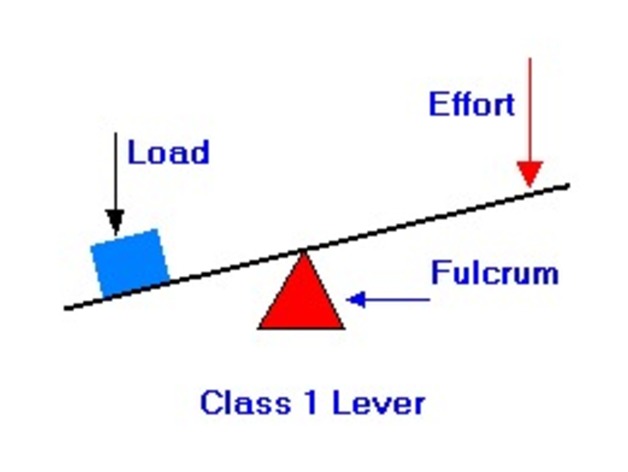
Law Of The Lever
thingiverse
To show how simple a lever tool can be used, and demonstrate the Law of the Lever. A box or cylinder filled with weight like a penny or other items can be used to show the three different classes of levers. During the design and construction process, basic 3D geometry has been used. Print Settings: Printer: Malan M180 Rafts: Doesn't Matter Supports: Doesn't Matter How I Designed This: To create the lever, which consists of three parts, the addition and subtraction of basic geometric shapes have been used. The lever is formed by a box. Weights are designed by a box and cylinder, and formed by a cutaway cylinder and box to hollow out the weight so students can fill with different weighted items like pennies, water, etc. Students can design different sizes of weights and shorten or lengthen the lever. All parts are designed for 3D printing. Custom Section: Project: Lever System Object: Students will be able to test and use in practice how levers work with fulcrum, motion, resistance, and effort. Students will find out how to change the fulcrum and how much effort is needed to lift the load or balance it out. Wikipedia - Lever Weight of Coins The lever tool may also work with inventing their own design of the lever, in order to meet the principle, while being as simple and compact as possible. Audience: The function of the lever tool is usually part of the curriculum of secondary school students learning about engineering and math. Preparation: The preparation for this project is the study of fundamental mathematical principles. Material: You will need items like pennies or other things that have weight. You may require a scale to measure the weight of the items to put in the box or cylinder. The penny weighs 2.5 grams. You will also need a 3D printer. No tools are required. Steps: 1. Students create the M1 & M2 box or cylinder, fulcrum, and plank. 2. Adding pennies to M1 & M2 and adjusting the 3D object along the plank "lever" and calculating the force and levers. A lever is a beam connected to ground by a hinge or pivot called a fulcrum. The ideal lever does not dissipate or store energy, which means there is no friction in the hinge or bending in the beam. In this case, the power into the lever equals the power out, and the ratio of output to input force is given by the ratio of the distances from the fulcrum to the points of application of these forces. This is known as the Law of the Lever: T1 = F1a T2 = F2b where F1 is the input force to the lever, and F2 is the output force. The distances a and b are the perpendicular distances between the forces and the fulcrum. Since the moments of torque must be balanced: T1 = T2. So, F1a = F2b. The mechanical advantage of the lever is the ratio of output force to input force: MA = F2/F1 = a/b This relationship shows that the mechanical advantage can be computed from the ratio of the distances from the fulcrum to where the input and output forces are applied to the lever, assuming no losses due to friction, flexibility or wear. Fulcrum in the middle: The effort is applied on one side of the fulcrum and the resistance (or load) on the other side, for example, a seesaw, a crowbar, or a pair of scissors. Mechanical advantage may be greater or less than 1. Resistance (or load) in the middle: The effort is applied on one side of the resistance and the fulcrum is located on the other side, for example, a wheelbarrow, a nutcracker, a bottle opener, or the brake pedal of a car. Mechanical advantage is always greater than 1. Effort in the middle: The resistance (or load) is on one side of the effort and the fulcrum is located on the other side, for example, a pair of tweezers or the human mandible. Mechanical advantage is always less than 1. Results: The students of lower grades can construct various weights, blocks, and cylinders layout for this project. Students of higher grades can design their own lever and 3D objects to measure the different classes of levers. Learn about the classes of levers.
With this file you will be able to print Law Of The Lever with your 3D printer. Click on the button and save the file on your computer to work, edit or customize your design. You can also find more 3D designs for printers on Law Of The Lever.
